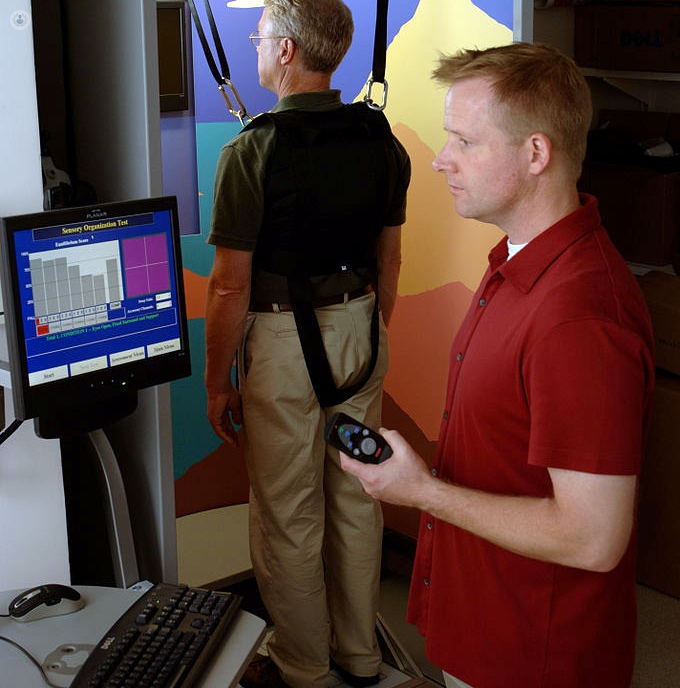Posturography
Mr Ajay Nigam - Otolaryngology / ENT
Created on: 01-14-2016
Updated on: 11-07-2023
Edited by: Kate Forristal
What is posturography?
Posturography is a test that measures and assesses a patient's balance function using a computerised platform. It can be carried out in-clinic by an ENT specialist and usually takes around 20 minutes.

What does posturography consist of?
Posturography involves placing the patient on a platform and measuring their movements. The platform may be static, or it may be dynamic, able to move in response to the patient or carry out a set of standard movements to test the patient’s balance in different situations.
The data obtained produces detailed images and reports, comparing the patient’s responses with what is normally expected for a patient of their age and body shape. Two of the key measurements made are the patient’s centre of gravity (COG) and their centre of pressure (COP).
Why is posturography performed?
A posturography is carried out for two types of patients:
- hose who have symptoms of vertigo or imbalance but have not been diagnosed clearly with physical and clinical examination
- those who have a known cause but need to know how the problem affects their daily life
What does the exam feel like?
The patient stands in an upright position on the platform, with the heels together and the tips slightly apart, forming an angle of about 30 degrees, and with the arms extended. It is important that the patient is relaxed and remains completely silent, since there should be no stimulus that can alter the balance. The specialist will ask the patient to make different movements to register them.
Meaning of abnormal results of posturography
This test diagnoses balance problems, whether of nervous, visual or sensory origin. The main diseases associated with imbalance are:
- vertigo
- labyrinthitis (infection and/or inflammation of the inner ear)
- vestibular neuritis (infection of the vestibular nerve of the inner ear)
- perilymph fistula (leakage of fluid from the inner ear to the central ear)
- Meniere's disease
- Parkinson’s disease
- arthritis
- visual disability
- back or neck pain
